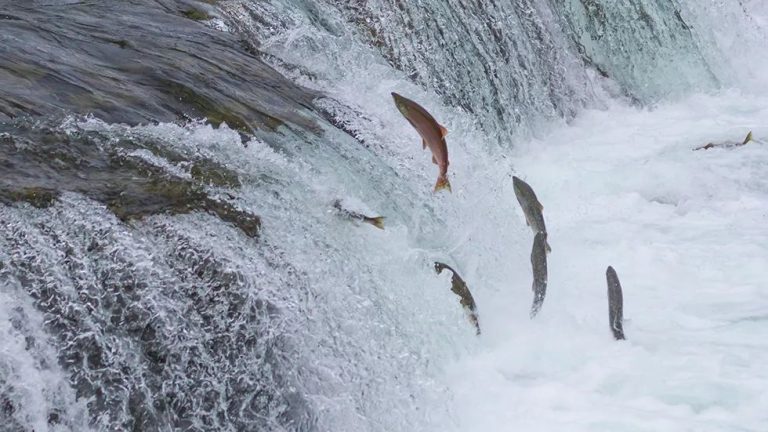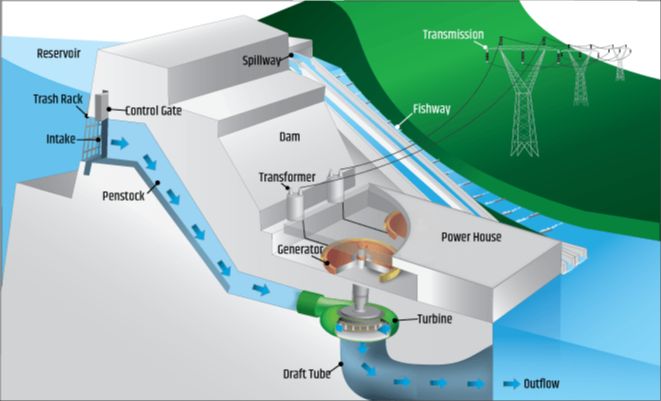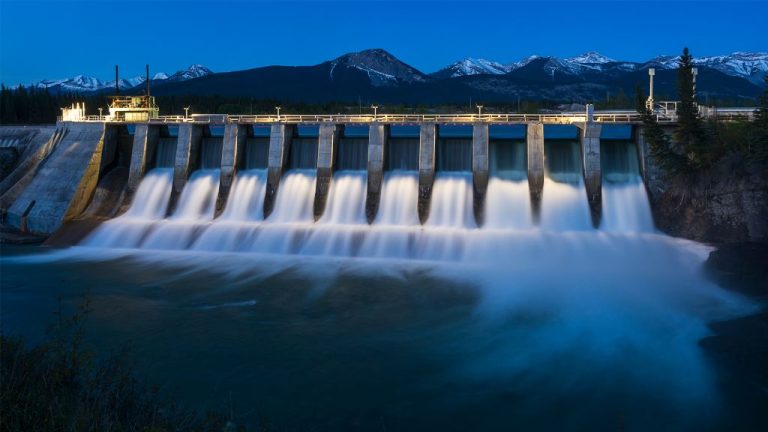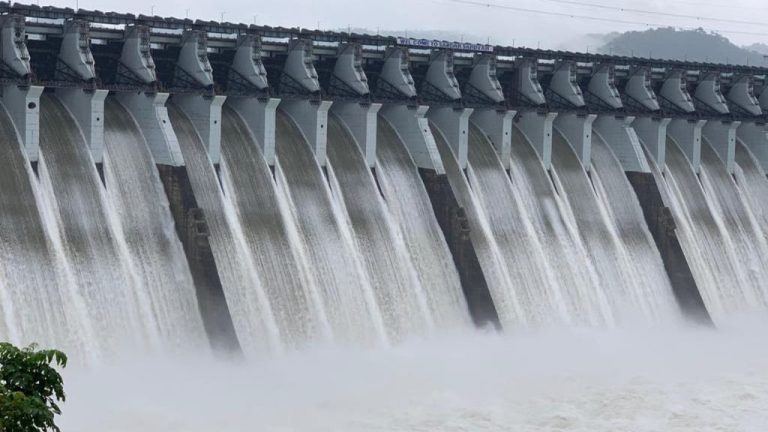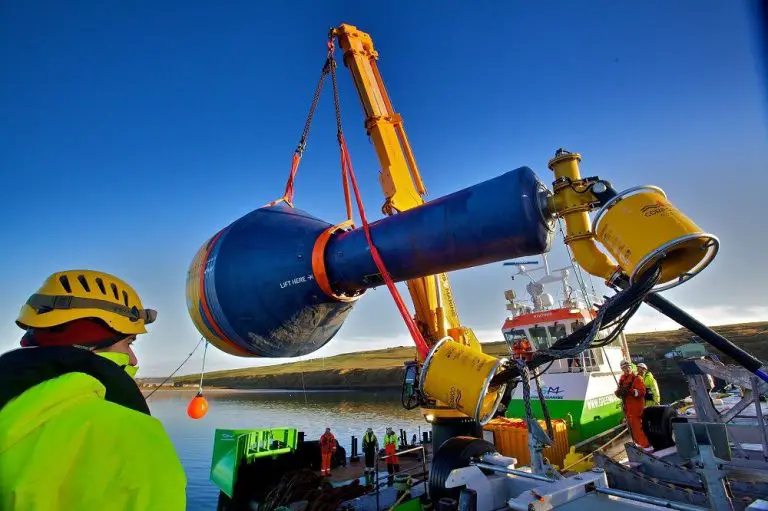How Do You Make Hydro Energy?
Hydroelectric power, or hydropower, is a form of renewable energy that uses the natural flow of water to generate electricity. It is considered a clean, environmentally-friendly power source because it does not produce air pollution or greenhouse gas emissions.
Hydropower works by using the energy from flowing or falling water to turn turbines connected to generators. As the water flows through the turbine, it causes the turbine blades to rotate. This rotational motion creates mechanical energy that gets converted into electrical energy by the generator.
One of the main benefits of hydropower is its reliability as an energy source. The flow of water in rivers and streams can produce a constant supply of electricity that is not dependent on environmental conditions like wind or sunlight. Large-scale hydropower projects can provide a stable base load power supply to electric grids.
Hydropower is also very flexible and can be adjusted to meet real-time energy demands. The output of hydroelectric generators can be changed rapidly to balance electricity supply and demand. This makes hydropower complement other renewable energy sources like solar and wind power.
Hydropower Basics
Hydropower, also known as hydroelectric power, utilizes the energy of flowing or falling water to generate electricity. Here’s an overview of how it works:
Flowing water from a river or reservoir is directed through large pipes called penstocks towards a turbine. The moving water rotates the turbine blades, like a pinwheel. The turbine shaft is connected to a generator above it, so when the turbine spins, it causes the generator to spin as well.
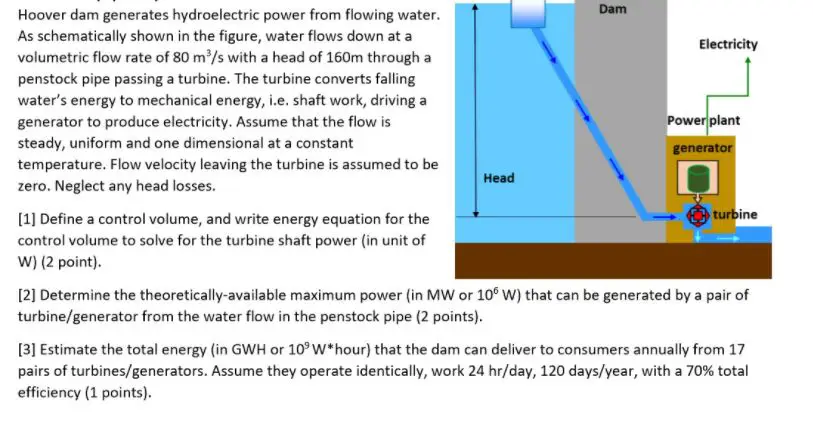
The generator contains magnets that spin around copper coils, creating an internal magnetic field. This motion between the magnets and coils produces electricity through the principles of electromagnetic induction. The electricity is then fed through transformers to increase the voltage for transmission over long distances.
Overall, the kinetic energy of the flowing water gets converted first into mechanical energy to rotate the turbine, and then into electrical energy by the generator. This electricity can then be distributed for residential, commercial and industrial uses.
Hydropower Components
Four main components work together to generate electricity at a hydropower plant: the dam, reservoir, intake, and turbine. Here’s an overview of each component and how they function:
Dam
The dam creates a large reservoir of water above the dam and controls the flow of water. It serves as a gate, allowing greater control over the water flow and timing of electricity generation.
Reservoir
The reservoir stores the water diverted from rivers and streams by the dam. It ensures there is enough water to generate electricity continuously throughout the year.
Intake
The intake is the entrance to the turbine system. It has gates, valves and screens to control water flow and protect the turbine from debris.
Turbine
The turbine converts the energy of the moving water into mechanical energy. This shaft rotation spins a generator to produce electricity.
Generator
The generator uses electromagnetic induction to convert the mechanical energy from the turbine into electrical energy.
Turbine Types
There are three main types of turbines used in hydropower plants: Kaplan, Francis, and Pelton. Each turbine design is optimized for different water flow and head conditions.
Kaplan turbines are propeller-like with adjustable blades. They are used in low-head hydropower sites with high flow rates. The adjustable blade pitch allows Kaplan turbines to operate efficiently over a wide range of flow conditions.
Francis turbines have fixed blades and are the most common turbine type used today. They operate well in medium-head hydropower sites. The semi-spiral shape of the Francis turbine blades enables efficient energy extraction across a range of water flow rates.
Pelton turbines have buckets attached to the outer rim of a wheel. They are suitable for high-head hydropower sites with low flow rates. The Pelton turbine converts the hydraulic energy of high-velocity water jet streams into rotational mechanical energy.
The optimal turbine choice depends on the specific site conditions. Hydroplant designers carefully select and customize turbines to maximize power output based on the available water flow and hydraulic head at the facility.
Power Generation
The key to power generation in hydropower is the turbine. As water flows through the turbine, the blades or runners turn at high speeds. These turbines are connected to generators which covert the mechanical energy of the spinning turbine into electrical energy through electromagnetism.
To generate electricity, a magnet is spun inside coils of copper wire inside the generator. This creates a flow of electrons in the wire called electricity. The faster the magnet spins, the more electricity is generated. With hydropower, it’s the fast-moving water that provides the force to turn the turbines and spin the magnets inside the generators.
The amount of electricity generated depends on the volume and speed of the water flow as well as the size and efficiency of the turbines and generators. Large hydropower facilities can have multiple turbines and produce hundreds of megawatts of power. The electricity generated is sent through transformers to increase the voltage before being transmitted through power lines.
Transmission
Once the kinetic energy from the flowing water has turned the turbine and generated electricity, the electricity next needs to be transmitted to homes, businesses, and other end users. Transmission lines carry electricity over long distances, sometimes hundreds of miles. Because energy is lost during long-distance transmission, the electricity generated at the hydropower plant is “stepped up” to very high voltages for more efficient transmission.
Transformers are used to increase, or step up, the generator’s low voltage electricity (ranging from 2,300 to 22,000 volts) to the high voltage levels (138,000 to 765,000 volts) required for transmission on the power grid. Stepping up to high voltages enables the current to move with less loss of power (watts) and overall energy efficiency. The transmission lines efficiently carry the high voltage current long distances across cities, states, and even between countries.
Upon arrival at a substation near its final destination, the electricity’s voltage is reduced, or stepped down, once again with transformers. From there, distribution lines carry the lower voltage electricity to homes, commercial areas, and factories where it will be used.
Dams and Reservoirs
Dams play an important role in generating hydroelectric power by creating reservoirs that store water. By building a barrier across a river, water can be stored in the resulting reservoir and controlled before being released downstream through turbines to generate electricity. The amount of electricity that can be generated depends on both the volume of water stored in the reservoir as well as the height of the dam. Larger reservoirs allow more water to be stored, while taller dams create greater hydraulic head pressure to drive the turbines. Reservoirs act as a battery by holding water and converting it to energy on demand when electricity is needed. During periods of high demand, water can be released from the reservoir through the dam to produce hydroelectricity. During periods of lower demand, water can be held back and saved for times when electricity load is higher. Reservoirs also help control flooding and provide recreational uses. Overall, dams allow the great power inherent in water to be harnessed and used when and where it is needed most.
Environmental Impacts
While hydropower is a renewable energy source, dams and hydropower generation can have significant environmental impacts. Some of the key concerns include:
Habitat destruction – Building a large dam floods areas upstream, destroying trees, vegetation, wildlife habitats and agricultural land. This alters ecosystems both upstream and downstream.
Loss of species – Flooding land for a reservoir destroys habitat for many plant and animal species. Migratory fish like salmon can be blocked from swimming upstream to spawn. Dams also change water temperatures and oxygen levels.
Altered flow patterns – Dams change the timing and amount of water flowing downstream, which impacts wildlife adapted to natural flow cycles. Rapid changes in river flows from dams opening or closing also erodes riverbanks.
Sediment buildup – Slower moving reservoir water allows more sediment to settle out. This reduces nutrients and habitats downstream, and accumulated sediment can impair dam functioning.
Methane emissions – Decaying organic matter in reservoirs can produce methane, a potent greenhouse gas. Proper reservoir management can help minimize these emissions.
There are ways to mitigate dam impacts, but hydropower projects still entail substantial environmental tradeoffs. Siting, design and operational decisions can reduce ecological harm, but not eliminate it entirely.
Hydropower Production
Hydroelectric power provides over 15% of the world’s electricity and large-scale hydropower facilities account for over 90% of that. In 2020, global electricity production from hydropower was estimated at 4,389 TWh. China is by far the largest producer, generating over 28% of the world’s hydroelectricity. Other top producers include Brazil, Canada, the United States, and Russia.
In the United States, hydropower accounts for about 7% of total electricity generation and 40% of renewable electricity generation. In 2020, hydroelectric power generation in the U.S. totaled 300 TWh. The top five hydroelectricity producing states are Washington, California, Oregon, New York, and Alabama. A majority of U.S. hydroelectricity comes from large-scale facilities, especially in the western states.
With most major rivers already developed, growth in hydroelectricity has slowed in North America and Europe. However, there is still untapped potential in Africa, Asia, and Latin America. Climate change is also expected to impact production as precipitation patterns shift. Overall, hydroelectricity will continue playing a major role in renewable energy production globally.
Future of Hydropower
Hydropower has tremendous potential for future growth and innovation. While hydropower currently provides over 16% of the world’s electricity, there is room for expansion, especially in developing countries. With only 22% of technically feasible hydropower resources currently in use, hydropower capacity could potentially double. New large-scale projects are planned around the world, including in South America, Africa and Asia.
At the same time, new technologies are making smaller-scale hydropower projects more viable. These include innovations like in-stream turbines that allow generating electricity from rivers or water pipelines without needing to build dams. Advances in pumped storage technology, which reuses water between an upper and lower reservoir to meet peak electricity demands, can also help grow hydropower storage capabilities.
The future of hydropower looks bright. With greater investment and continued innovation, hydropower can expand electricity access, especially in remote areas, while also serving as a reliable complement to intermittent renewable energy sources like wind and solar.

